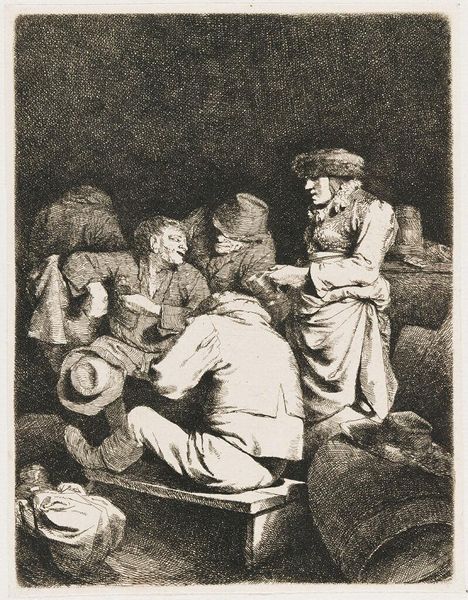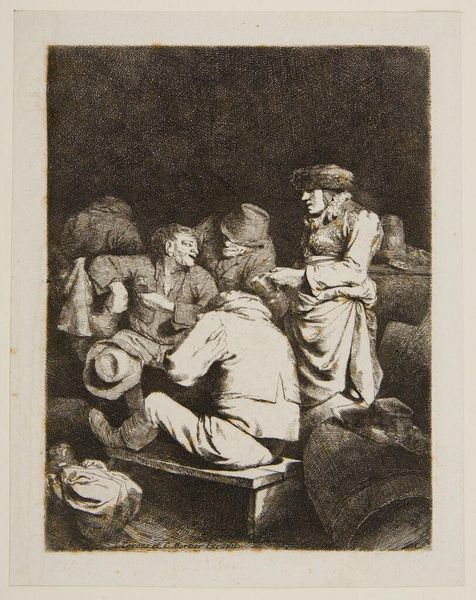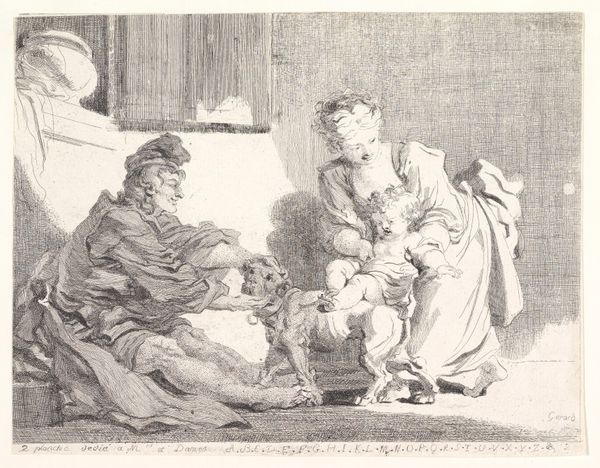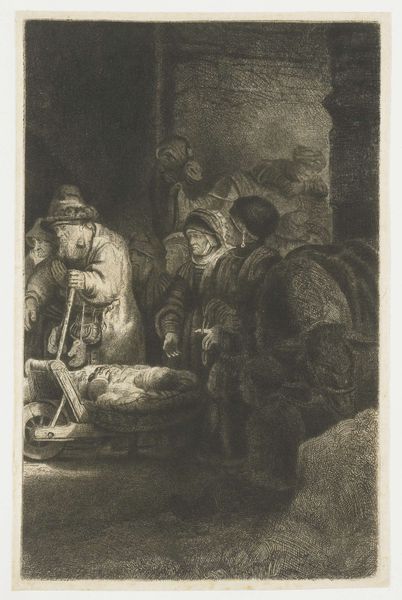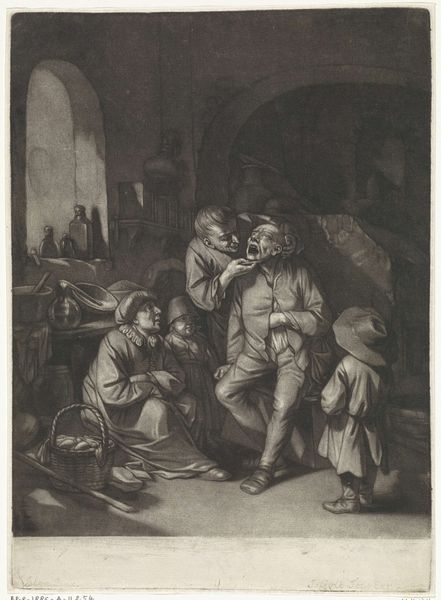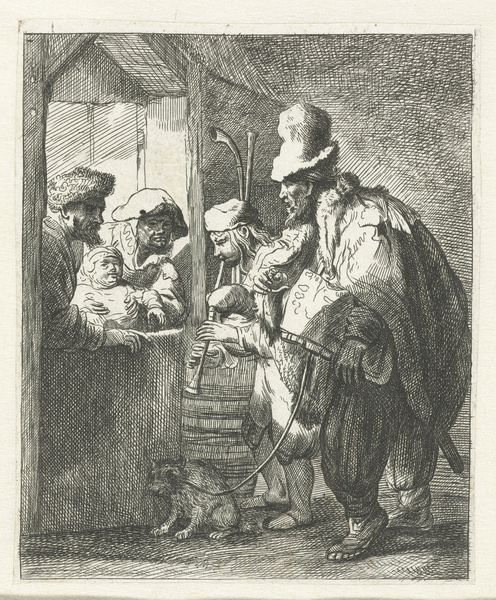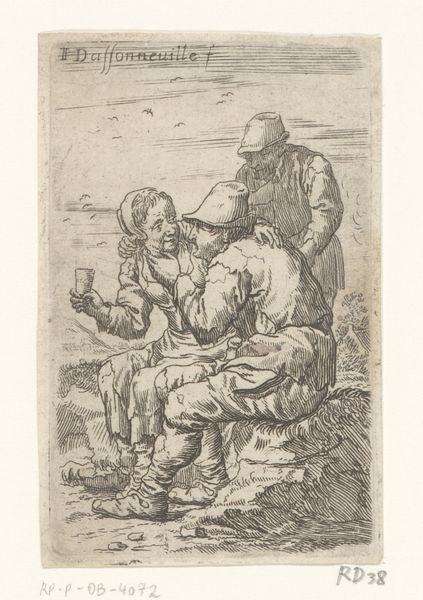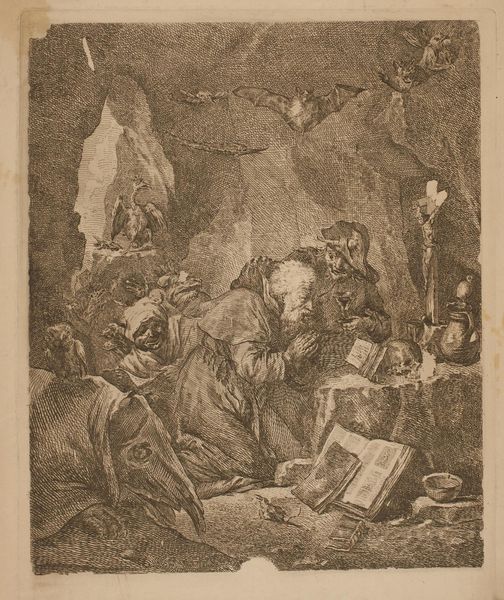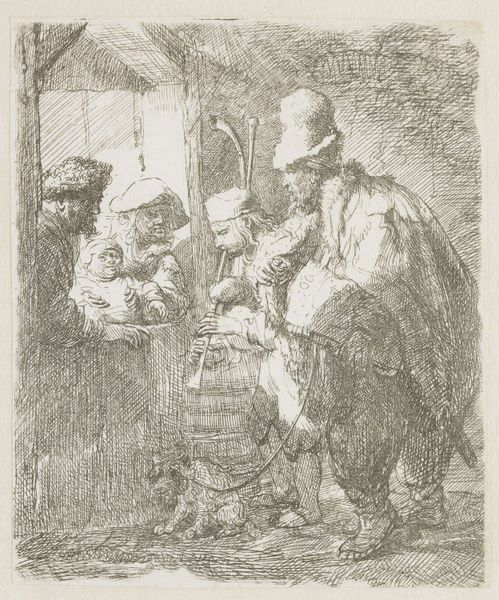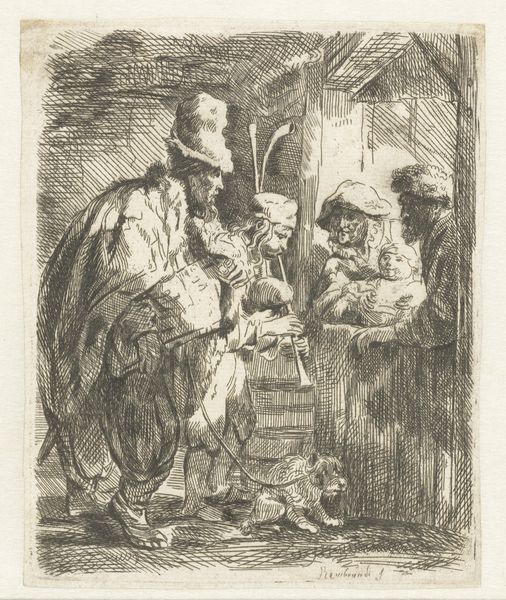
Gammel kvinde serverer for tre mænd i en krostue 1631 - 1664
0:00
0:00
print, etching
#
dutch-golden-age
# print
#
etching
#
figuration
#
genre-painting
Dimensions: 175 mm (height) x 132 mm (width) (plademaal)
Curator: Cornelis Pietersz Bega's "Old Woman Serving Three Men in a Tavern," created between 1631 and 1664, invites us to observe a snapshot of Dutch Golden Age life, etched with fine detail onto the print. Editor: Immediately, I’m struck by the mood—it feels almost suffocating, this enclosed space. The dense etching creates such a shadowy, textured effect. The eye struggles to find a point of rest within the composition’s density. Curator: Indeed. Observe how Bega orchestrates light and shadow. Notice how the forms of figures emerge out of a kind of fog created with dense etching. Editor: For me, taverns in art are consistently loaded with meaning. What symbols and imagery do you perceive resonating here? The figures and the items surrounding them convey narratives and perhaps shared stories across cultures. Curator: We find standard elements within the etching, elements of taverns, with barrels lining the lower right and the figures arrayed in what appears to be shared indulgence. The lines pull focus to the way the figures interact. One man speaks animatedly, while another averts his gaze and the third is more of a vague shape of the figure that offers structural balance within the pictorial frame. Editor: That old woman—her steady presence and traditional attire carry a strong sense of cultural memory. She becomes an archetypal server, perhaps, but her position is interesting as well: notice how her posture implies she is set apart, almost a knowing observer amidst the revelry. This feels indicative of older power dynamics within communities, which transcend period styles, and can connect viewers to different cultures even centuries later. Curator: Her gaze indeed seems external to the immediate exchange among the men, imbuing the scene with subtle dramatic tension. Also note the economy of Bega's formal structure in contrast with the complexity of the etching. Editor: It is almost melancholic. Reflecting on our conversation, Cornelis Pietersz Bega provides more than just a scene, offering an opportunity to decipher societal fragments. Curator: Agreed. By investigating Bega's strategic placement of figures and light play, one begins to realize how much semiotic value resides within "Old Woman Serving Three Men in a Tavern".
Comments
No comments
Be the first to comment and join the conversation on the ultimate creative platform.


